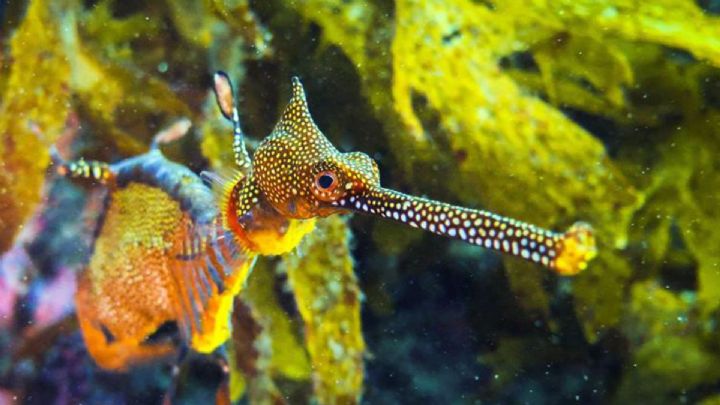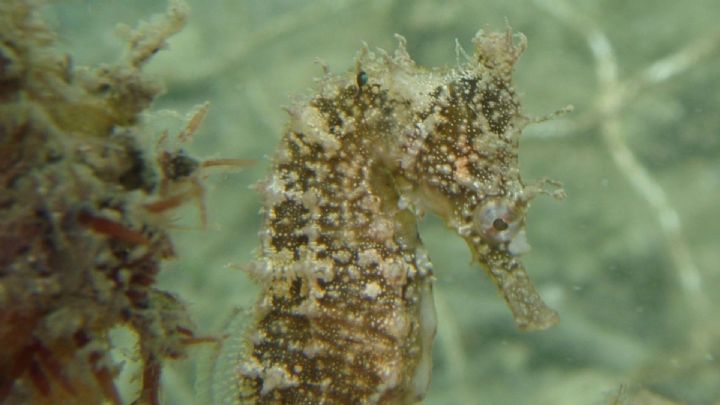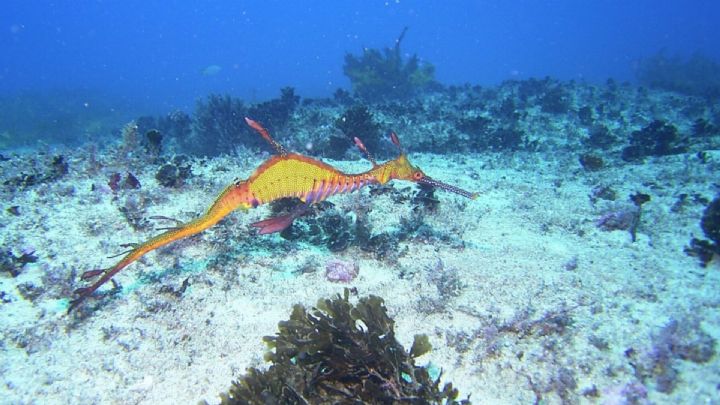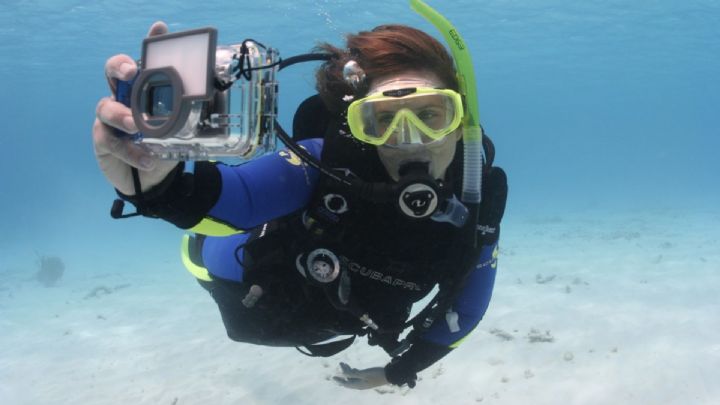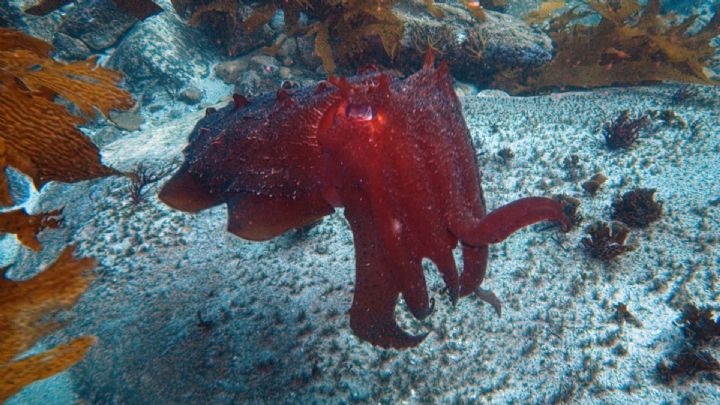With a variety of dive sites on offer, we can cater for beginnners, veterens and everyone in between! .This area offers some of the most interesting and diverse marine life in Sydney including the beautiful Weedy Sea Dragon!
The best site will be selected on the day by one of our experienced Divemasters/Instructors and is determined by a number of factors including swell, tides and experience of the group.
The Monument
The entry and exit point for this dive are both in the same spot (unless you do it as a drift dive). It's a little channel between the rocks right in front of the flagpole. It is one of the easiest entries in that you can sit on the rocks to put your fins on and in all but the most severe conditions, as there are no waves.
The Monument is a very easy dive site, with the relatively longer surface swim being the hardest part. Due to its location right in the bay, visibility can be a little worse here than the other sites around Kurnell. Overall however, it is still a very nice relaxing dive with usually lots to see. Once you enter the water, snorkel out over kelp in a north easterly direction. There is a red navigation marker out in the bay and if you head towards it you are going in the right direction. Once you become sick of snorkelling you can descend as sometimes large rays are seen swimming over the kelp. At this point you will be in about 4 mt of water so continue to follow your compass until you come to a drop off. Drop over the wall for the main part of the dive. If visibility is poor the top of the wall also makes an interesting dive. Swim along with the wall on your right.
The Monument is a great dive to take a torch, as there are numerous overhangs where you could see anything from large Cuttlefish to Blue Devils, Wobbegongs and even the occasional Banded Coral Shrimp.
This dive is often done as a drift on an outgoing tide where you can drift around to Sutherland Point, or even the Steps depending on air supply
The Steps
After entering the water, swim towards Bare Island for about 20 metres. Descend here amongst the large boulders and make your way down to the sand at around 10 metres.
Follow the sand edge to the east and the water gradually gets deeper to about 15 metres. When looking at the sponge covered rocks, have a closer look and you will notice a large variety of different species of nudibranchs. The rocks are also home to numerous other species including Blue Throated Ascidians, Lace Coral, Sea Fans, Tube Worms and Sea Squirts. Many of the rocks are covered with a redish weed. If you look very carefully at this weed, you may even discover a pygmy pipe horse.
On the sand at the 12 to 15 metres level, in the area up to 3 or 4 metres from the rocks, you should see beautiful common sea dragons, but you must look carefully for they can easily be mistaken for pieces of kelp. In the late winter and early spring period look close and you may even see an egg laden male.
The Leap
Take care climbing down the narrow track for this dive, and when you reach the bottom be VERY CAREFUL not to slip on the blackish slime on the rock shelf, especially if wet. If you do not take care YOU WILL SLIP OVER!
This site is done as a drift dive, although we have heard of certain dive stores getting customers out at the same spot, it can be very tricky so not the preffered method.
Swimming directly out from the entry, you will drop down to around 22 metres. You will find a number of bommies here and if you look carefully you may even spot the occasional seahorse or two. Swimming further, the depth will decrease to around 10-12 metres. For the most part, exiting at the steps is the easiest. We prefer to get the gear together, pull on the wetsuit or drysuit and then move the vehicle down to the steps carpark rather than climbing all the way up then having to walk up the road with full gear on.
Next Trip

